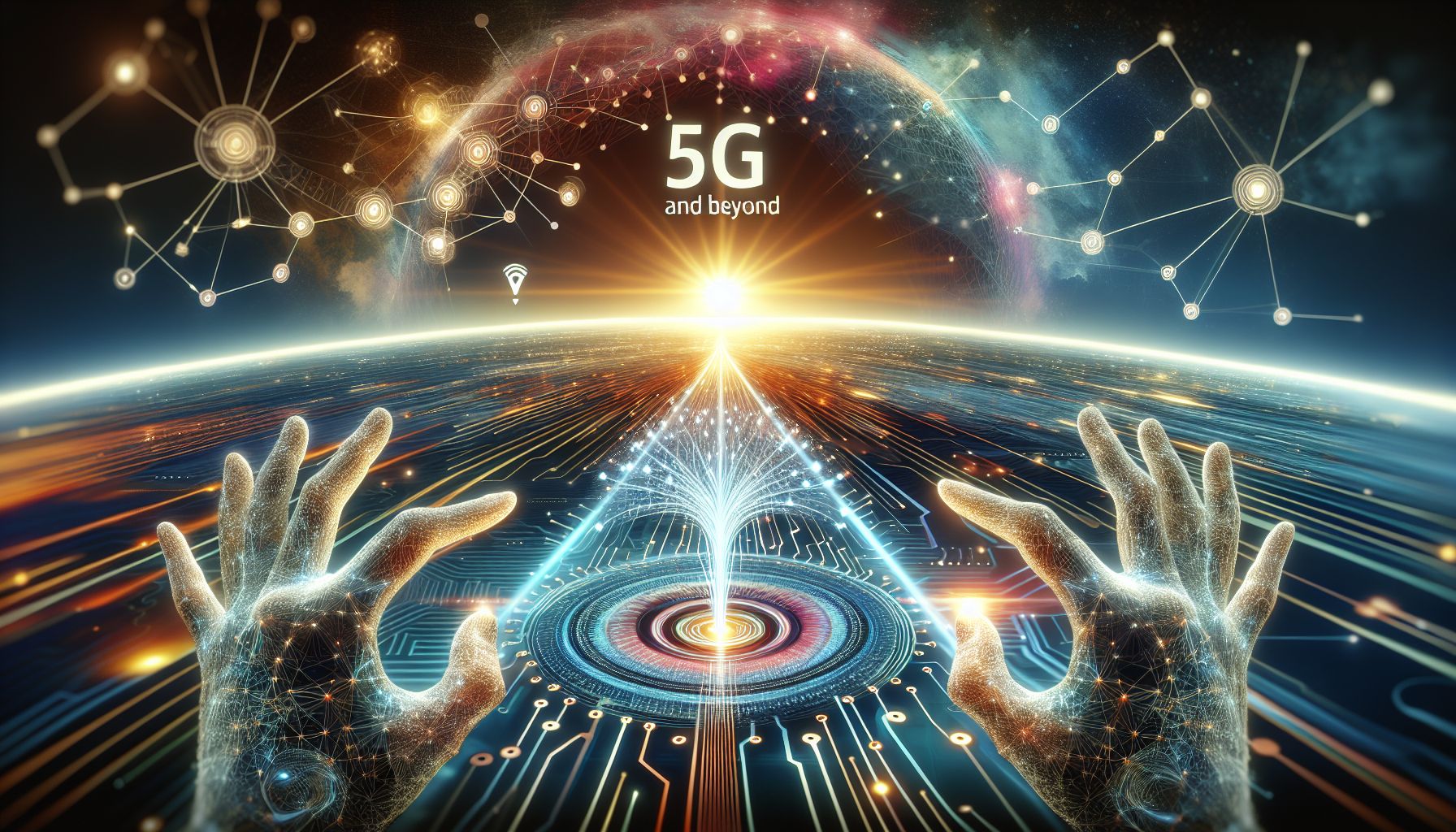📌 Let’s explore the topic in depth and see what insights we can uncover.
⚡ “Still think 4G is the bee’s knees? Wait till you unwrap the mind-boggling wonders of 5G and beyond - we’re talking sci-fi level connectivity!”
In recent years, the buzzword on everyone’s lips in the tech world has been 5G. As the fifth generation of mobile communication technology, it promises to revolutionize the way we connect with the world, offering lightning-fast speeds, reduced latency, and improved network reliability. But as we begin to unwrap the possibilities of 5G, we’re also starting to glimpse the horizon of what lies beyond: 6G and the future of connectivity. In this blog post, we’ll dive deep into these exciting developments, taking a closer look at the capabilities of 5G, exploring the potential of 6G, and examining how these advancements will shape our digital future. So strap in, because we’re about to embark on a high-speed journey into the future of connectivity! 🚀
🚄 5G: The Speed Train of Connectivity

Unveiling the Future: 5G Connectivity in Action
Just like a high-speed train, 5G is all about speed and efficiency. But instead of carrying passengers, 5G is designed to transmit data at blistering speeds. Current 4G networks can reach speeds of up to 100 Mbps, but 5G blows this out of the water, with theoretical speeds reaching up to 10 Gbps. That’s like going from a bicycle to a bullet train! 🚲🚅 But speed isn’t the only advantage of 5G. It also boasts lower latency, meaning data packets can be sent and received almost instantaneously. This will have a huge impact on areas like online gaming, where every millisecond counts, and autonomous driving, where instant communication between vehicles and infrastructure could be the difference between safety and disaster. Moreover, 5G networks are designed to handle a higher volume of devices, making it a game-changer for the Internet of Things (IoT). From smart homes to smart cities, the proliferation of connected devices will find a robust and reliable network in 5G.
📡 The Limitations of 5G: Not All Sunshine and Rainbows
While 5G has a lot to offer, it’s not without its challenges. For one, the higher frequency bands used by 5G (known as millimeter waves) have a shorter range compared to 4G signals. They also have a harder time penetrating obstacles like buildings and trees. This means that more base stations or antennas will need to be installed, leading to increased costs and logistical issues. 5G also requires significant energy consumption, which raises concerns about its environmental impact. Furthermore, there are still security concerns to be addressed, as the increased connectivity could potentially provide more opportunities for cyberattacks.
🌌 6G: Gazing Into the Connectivity Cosmos
While 5G is still in its infancy, researchers are already looking to the future. The next frontier? 6G — the sixth generation of mobile communication technology. Expected to be rolled out around 2030, 6G is set to take us into the realms of science fiction, promising mind-boggling speeds, ultra-low latency, and a host of new applications. Compared to the bullet train of 5G, think of 6G as a hyperloop, transporting us into the future at warp speed. Some experts estimate that 6G could provide speeds of up to 100 Gbps — that’s ten times faster than 5G! But speed is just the tip of the iceberg. 6G is also expected to usher in advanced applications that combine AI, IoT, and big data. Imagine smart homes that not only connect to all your devices, but also anticipate your needs, adjusting the temperature, lighting, and music before you even think about it. Or think about health monitoring devices that can detect abnormalities and alert your doctor in real time, potentially saving lives.
🚧 The Challenges of 6G: Building the Bridge to the Future
While the promise of 6G is exciting, building this futuristic bridge won’t be easy. The technical challenges alone are daunting. Achieving the kind of speeds envisioned for 6G will require the use of even higher frequency bands, which will exacerbate the range and penetration issues faced by 5G. Energy consumption is also a significant concern. With more devices and faster speeds, the energy needs of 6G could be massive. This will require innovative solutions to minimize the environmental impact. Moreover, as with any new technology, there will be security and privacy issues to contend with. The increased connectivity and advanced AI applications of 6G will require robust safeguards to protect against cyber threats and ensure the privacy of users.
🧭 Conclusion
As we unwrap the future of connectivity, it’s clear that we’re on the verge of a new era. The advent of 5G is set to revolutionize our daily lives, bringing faster speeds, lower latency, and greater network capacity. Meanwhile, the horizon of 6G teases even more exciting possibilities, from AI-driven smart homes to real-time health monitoring. However, these advancements also bring challenges, from technical hurdles to environmental concerns. As we ride the high-speed train of 5G and gaze into the 6G cosmos, we must navigate these challenges with care. After all, the future of connectivity is not just about faster speeds and advanced technologies — it’s about creating a digital world that is safe, sustainable, and beneficial for all. 🌍🤝🌐
📡 The future is unfolding — don’t miss what’s next!
